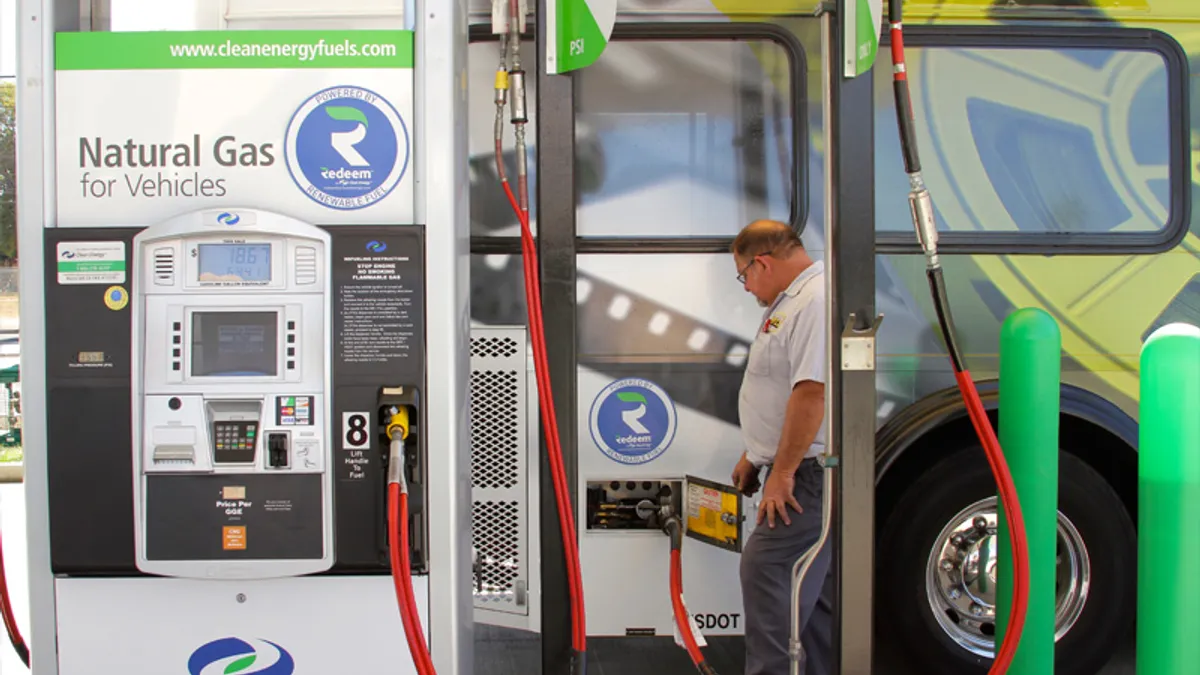Dive Brief:
- The Coalition for Renewable Natural Gas (RNG Coalition), Energy Vision, the National Waste and Recycling Association (NWRA), Natural Gas Vehicles for America (NGVAmerica), and the Solid Waste Association of North America (SWANA) filed joint public comments to the EPA to advocate for RNG under the proposed Renewable Fuel Volume Standard rule, according to an emailed press statement.
- The comments ask that the EPA set a final 2018 Renewable Volume Obligation that reflects "market reality" and considers all available RIN generation data including fuel from 32 projects scheduled to come online by end of 2018.
- This is the second letter filed to EPA Administrator Scott Pruitt in the last 10 days from waste industry-related groups calling on the EPA to amend the proposed rules.
Dive Insight:
As previously reported by Waste Dive, the proposed renewable fuel volume requirements put forth by the EPA in July cuts the 2017 obligation for cellulosic biofuel from 311 million gallons of fuel to 238 million gallons of fuel in 2018 — a decrease of 23%. On Aug. 1, the EPA held a hearing with the RNG industry and other stakeholders on the proposed rules in Washington, D.C., which has sparked comment and feedback from dozens of industry executives.
"This rule has great economic and energy security implications for the future of American fuel. It will determine whether we cede our energy security to foreign oil, or embrace the domestic production of clean renewable natural gas available today in communities across the country," said RNG Coalition CEO Johannes Escudero in a press statement. RNG has made up more than 95% of the cellulosic biofuel generated under the RFS program, therefore it is hopeful that comments from the RNG industry will not be taken lightly.
While Pruitt claims the proposed 23% cut reflects "actual production and consumer demand," that reflection will only be accurate if pending volumes are considered — and the cut could be detrimental to the waste industry. Landfills and anaerobic digestion facilities that produce RNG have the opportunity to make more money from RIN credits than from the gas alone, and associated RNG projects are projected to double by 2025. It is up to the RNG, waste and related industries to maintain pressure on the EPA as rules are finalized.















